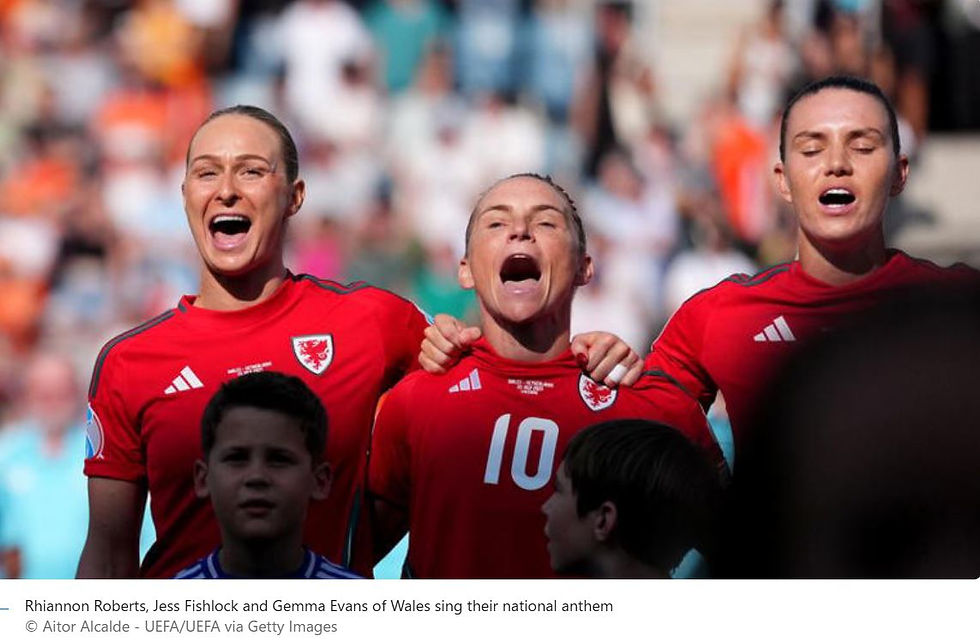Whose voice are we hearing?
- Lisa Newberry
- Jul 10
- 1 min read
Women’s sport is booming this summer – and rightly so.
It’s brilliant to see record-breaking crowds at the Euros – all clear evidence (in terms of data, at least) of the recognition, visibility and pride that women athletes are receiving.
At the Euros, or any women’s championship, the atmosphere has been electric so far. Fans singing their hearts out from the stands, the anticipation building… and then it’s anthem time. A moment to lose yourself in national pride.
And yet, as has happened before every kick-off, the anthem is in a key clearly arranged for a male tenor voice – and the teams on the pitch just can’t sing it. Because most women’s vocal ranges don’t sit comfortably in that register.
Yes, I know why it happens - Most national anthems are traditionally arranged in keys suited to male tenor or baritone voices, because they were composed or standardised at a time when only men performed them at official events. But the average female vocal range is higher, and many women struggle to sing in those keys. The result? We either have to drop an octave, which can lose impact, or we strain to reach notes that sit uncomfortably low or high. It’s a small but telling example of how male norms still shape the experience, even in women’s sport.
Come on.
If we’re serious about equality, let’s start by putting the anthem in a key that suits the voices on the pitch. Because representation is in the detail.









Comments